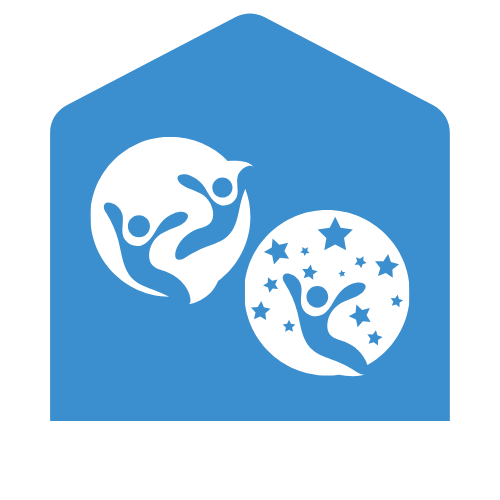Table of Contents
ToggleEver wondered how ChatGPT can chat with you like a pro while sounding as smooth as butter? It’s like having a virtual buddy who’s always ready to lend an ear—minus the awkward silences. ChatGPT’s voice technology takes the complexities of human speech and wraps them in a friendly digital package, making conversations feel natural and engaging.
Overview of ChatGPT Voice Technology
ChatGPT voice technology employs state-of-the-art natural language processing to facilitate fluid conversations. This technology leverages deep learning models to generate human-like speech, enhancing user interaction. Advanced algorithms decode spoken language, allowing for real-time understanding and generation of responses.
Speech synthesis plays a critical role in this process, translating text into engaging vocal patterns. The system adjusts intonation and inflection, mimicking the nuances of human speech. Context awareness allows ChatGPT to respond appropriately based on conversational cues and audience engagement.
Users experience a range of accents and tones, contributing to a more personalized interaction. Customizations cater to diverse preferences, making the virtual assistant relatable. Real-time adjustments help maintain a dynamic flow, ensuring that conversations remain natural and engaging.
ChatGPT also utilizes machine learning techniques to improve over time. Continuous learning from user interactions enhances the accuracy of responses and voice modulation. Feedback mechanisms allow for improvements in pronunciation and expression, further elevating the user experience.
Integration with various applications expands the utility of ChatGPT voice technology. This adaptability makes it suitable for customer service, educational tools, and entertainment platforms. Businesses benefit from the seamless incorporation of voice capabilities, leading to improved interaction rates and satisfaction.
Mechanism Behind ChatGPT Voice

ChatGPT’s voice mechanism combines sophisticated technologies to generate seamless conversational experiences. The system relies on advanced algorithms for efficient interaction and user engagement.
Text-to-Speech Conversion
Text-to-speech conversion forms the backbone of how ChatGPT vocalizes written content. This technology transforms text inputs into audible speech through complex synthesis processes. Various models analyze language patterns and produce natural-sounding speech outputs. The system incorporates different accents and tones, catering to user preferences. Speech synthesis engines utilize pre-recorded human voices or neural networks to create lifelike audio experiences. Quality of the output often exceeds expectations, providing clarity and emotional resonance.
Natural Language Processing
Natural language processing enhances ChatGPT’s ability to understand user queries. The technology decodes and interprets human language, enabling intuitive responses. Through context recognition, the system identifies nuances and intent behind spoken phrases. Leveraging machine learning, ChatGPT adapts to diverse conversational styles over time. This adaptability leads to more accurate replies and effective communication. With robust NLP techniques, the framework grasps intricate language aspects, significantly improving user interaction quality.
Applications of ChatGPT Voice
ChatGPT voice technology finds various applications across multiple sectors. Its impact manifests in enhancing communication and fostering engagement.
Enhancing User Interaction
ChatGPT voice technology elevates engagement through personalized conversations. Businesses leverage its capabilities to provide instant responses in customer support settings. Users receive immediate assistance, maintaining satisfaction levels. In educational platforms, the system adapts to student needs, personalizing learning experiences. This adaptability encourages proactive participation, leading to better outcomes. Furthermore, interactive storytelling captivates audiences in entertainment, creating immersive experiences. Engaging with ChatGPT in these contexts delivers dynamic exchanges that mirror human interaction, reinforcing user connection.
Accessibility Features
Accessibility benefits significantly from ChatGPT voice integration. Individuals with disabilities encounter improved usability through speech recognition and synthesis. The technology facilitates communication, aiding those with speech impairments. Voice commands simplify interactions with devices, enhancing user autonomy. Additionally, language translation capabilities make content available to diverse audiences. Multilingual support enables broader access to information and services. This inclusive approach positions ChatGPT voice as a valuable tool in creating equitable technology experiences. Enhanced accessibility fosters a more inclusive environment for all users.
Advantages of ChatGPT Voice
ChatGPT voice offers multiple advantages, enhancing user experiences significantly. Its capabilities create a more dynamic interaction that goes beyond text.
Improved Engagement
Engagement levels rise as ChatGPT voice creates immersive experiences for users. Authentic vocal patterns grab attention and hold interest, making conversations feel personal. Listeners find it easier to connect through natural-sounding tones and fluid speech. Real-time responses allow for more spontaneous discussions, spontaneously nurturing a sense of involvement. Users report higher satisfaction rates as the voice technology makes interactions enjoyable and approachable.
Versatility in Communication
Versatile communication opportunities arise with ChatGPT voice, catering to diverse user needs. It adapts to various contexts, whether in customer support, education, or entertainment. Users benefit from its ability to switch tones and styles, providing tailored experiences. Professionals leverage ChatGPT voice for instant assistance, enhancing service efficiency. Additionally, language translation features broaden accessibility, allowing diverse groups to engage effectively. This adaptability creates an inclusive environment, ensuring that everyone can access information and support seamlessly.
Challenges and Limitations
Despite its advancements, ChatGPT voice technology faces challenges that impact performance.
Speech Recognition Issues
Speech recognition isn’t flawless. Background noise often disrupts clarity, resulting in inaccuracies and misinterpretations. Even accents or dialects can pose difficulties, leading to misunderstandings. Variability in pronunciation further complicates recognition, sometimes causing the system to fail in capturing the intended message. Users might experience frustration when their spoken inputs don’t align with expected outputs. Improved training datasets can enhance recognition efforts, yet limitations in diverse speech patterns persist.
Contextual Understanding
Contextual understanding remains a hurdle. While ChatGPT strives for nuanced comprehension, it sometimes falters in grasping complex conversations. Ambiguities in language or overlapping topics can confuse the system, hindering accurate responses. Without sufficient context, the system might provide generic replies that don’t address specific user needs. Improvement in this area relies on continuous learning and data enrichment, yet the challenge of understanding varied conversational styles will endure.
ChatGPT voice technology exemplifies the future of interactive communication. By blending advanced algorithms with natural language processing, it creates engaging and human-like conversations. This innovation not only enhances user satisfaction but also broadens accessibility for diverse audiences.
As businesses and educational institutions adopt this technology, the potential for improved engagement and personalized experiences expands. While challenges remain in speech recognition and contextual understanding, ongoing advancements promise to refine these capabilities.
In a world increasingly reliant on effective communication, ChatGPT voice stands out as a transformative tool that fosters connection and inclusivity across various sectors.







